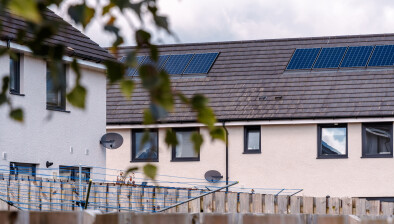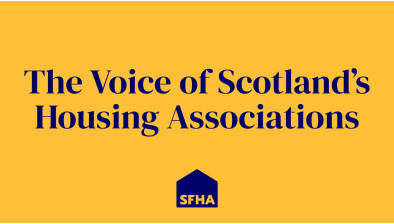SFHA: We must create a socially just housing system in order to deliver for the future
The Scottish Government’s proposals for a longer-term plan for the housing system are welcome but the success of the current programme – as well as the next – will depend on creating a socially just housing system, maintaining existing levels of investment as well as aligning funding with the government’s vision for 2040, according to the Scottish Federation of Housing Associations (SFHA).

Lorna Wilson
In its response to the government’s Housing to 2040: Consultation on Outline Policy Options, SFHA also said it is vital that, since the vast majority of housing that will be in use during the period to 2040 has already been built, there must be funding for housing associations to maintain, repurpose and remodel existing stock.
SFHA’s priorities for the future are increasing the number of homes in Scotland – through building and refurbishment, ending poverty and inequality, integrating health and social care with housing, and tackling climate change. In its response, which SFHA members from across Scotland contributed to, the federation makes over 35 recommendations regarding the housing system, affordability, accessibility, delivery, energy efficiency, quality, and innovation.
SFHA said the housing system needs fundamental change, including treating housing in the same way as infrastructure – to be planned and delivered beyond electoral cycles; permanent and substantive government investment to plan strategically for all ages and stages, keep standards high and costs affordable; and a collective effort to end the stigma that surrounds social housing.
Scotland’s ageing population is one of the biggest challenges facing the sector in the next 20 years. SFHA believes that every new home should be built so that it can be occupied by any person, regardless of age or mobility. This would eliminate the requirement of adaptations or relocation to meet the needs of an individual occupier. Further government investment in off-site construction would help to realise this ambition as homes can be created with built-in flexibility from the start, e.g. with moving walls.
SFHA wants to see an end to the different energy efficiency standards that exist between the private rented and social housing sectors. If this doesn’t change, by 2032 only the social housing sector will have maximised opportunities for increased energy efficiency – only eight years before the target for net zero carbon. SFHA added it is vital that funding for energy efficiency increases year-on-year in order to meet government standards as well as tackle fuel poverty and climate change.
The availability of land is an issue which SFHA said must be addressed. SFHA is calling for the Scottish Government to set up a body to acquire land and offer plots with planning permission and infrastructure in place in order to open up sites that would otherwise not be viable for affordable housing.
Lorna Wilson, SFHA interim head of policy, membership, and innovation, said: “Our vision for 2040 goes beyond a funding commitment – we must see a reframing of the housing system through the lens of social justice and take this opportunity to end the stigma that surrounds affordable housing. The social housing sector delivers some of the highest quality, most energy efficient homes in Scotland. SFHA would like to work with the Scottish Government to conduct a study into stigma and help to deliver a public education campaign.
“While the current programme to build 50,000 affordable homes by 2021 is on track, Scotland is far from securing the supply of housing it needs. With 167,000 people on waiting lists for social housing across Scotland, 500,000 homes lost through Right to Buy, and rents in the private rented sector £100 more per week on average than in social housing, developing more affordable homes must be a priority. In order to meet existing and future need, the government must commit to another long-term programme, of no less than the current affordable homes target.
“However, not only do we need more new homes, but we must increase and sustain supply through maintaining and refurbishing existing homes. It is also vital that homes are built to meet people’s needs throughout their lives – with accessibility built-in from the start, rather than added on at a later stage.”








